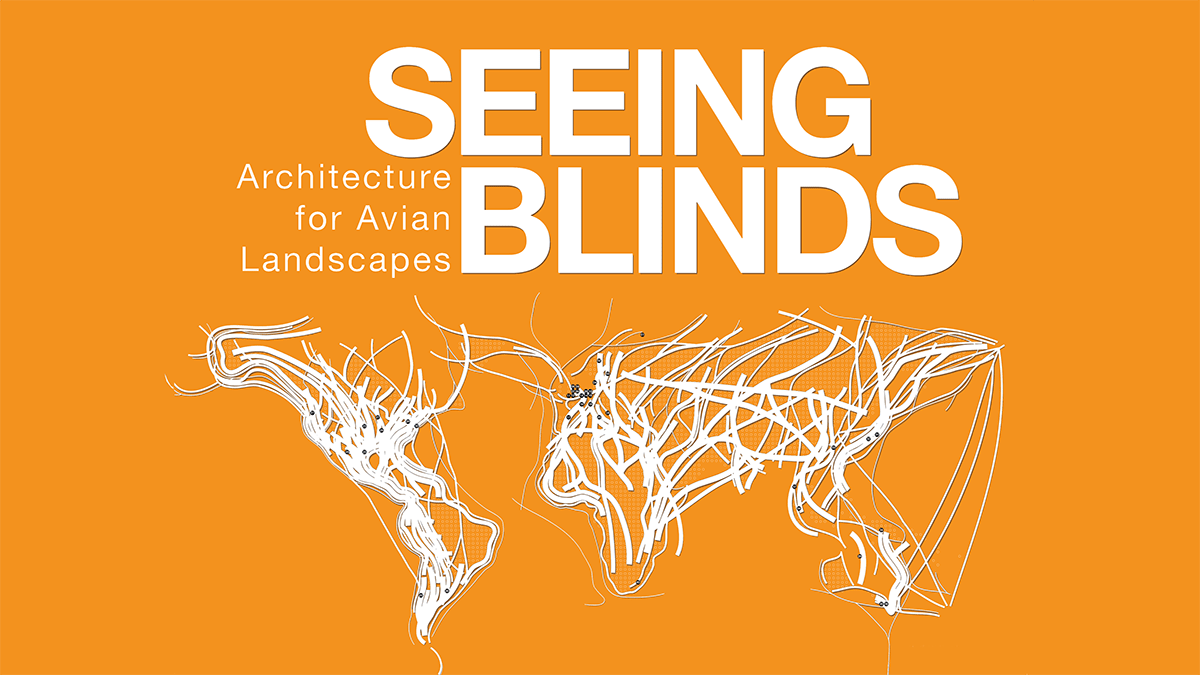3835 Campus Drive
Architecture Building (145 ARC)
College Park, MD 20742
United States
View photos from the Kibel Gallery opening on Flickr.
Seeing Blinds: Architecture for Avian Landscapes
Seeing Blinds is an exhibition of ongoing research on bird blinds by Michael Ezban, RA, ASLA, and features 40 case studies of extraordinary architecture by contemporary designers and artists.
Bird blinds are small-scale enclosures or screens from which people surreptitiously watch birds. The blind is an enduring building typology with an ancient history, a branching lineage, and an important role to play amidst the wicked challenges of the Anthropocene. Given the recent massive declines in global bird populations that demand attention, care, and action, the bird blind is an architectural typology of renewed significance.
Seeing Blinds is a research and creative-practice project which posits that architects, landscape architects, and artists have inaugurated a new phase of innovation and relevance in the evolution of the bird blind. In the 21st century, designers have elevated blinds into prominent artistic elements that enrich the public realm and enable the co-creation of meaningful encounters between people and birds.
Seeing Blinds assembles a global catalog of 40 bird blinds located across nine flyways and 22 countries; in this exhibit these case studies are spatially arranged into a “flock of blinds.” This project critically examines the histories and contemporary ambitions of this building typology through the lens of design, and also joins burgeoning discourses in the humanities, social sciences, and natural sciences that examine human-avian entanglement.
This exhibit is made possible in part through a grant from the 2023 Healthy Places Matter Seed Grant Program, offered by the School of Architecture, Planning and Preservation and the School of Public Health at the University of Maryland.

